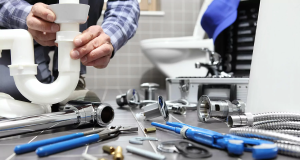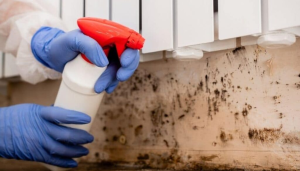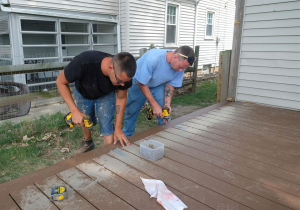Plumbers install and repair pipes and fixtures such as toilets, showers, and sinks. They also work on plumbing projects at construction sites.
Medical professionals, first responders, and teachers may come to mind when most people think of noble professions. However, plumbers deserve much recognition for their hard work and dedication. Contact Gateway Plumbers of Aurora now!

Plumbing installation is a crucial part of new construction and home renovation projects. It involves laying pipes, connecting fixtures and testing for leaks. Professional plumbers have the skills and experience to complete these tasks safely and efficiently. They are also familiar with local regulations and standards.
Before starting a plumbing installation, the team will mark out where the lines will run and set their connections to the municipal water supply and the sewage system. This ensures that the water system is fully integrated with the city’s infrastructure. In addition, the team will install a main line that supplies water to the entire house. This requires careful planning to ensure adequate pressure without causing clogs or overflow. The plumbing systems will also include shut-off valves that allow individual access to specific parts of the house.
The above-ground rough plumbing phase involves installing drains, vents, and sewer lines to prepare the building for its internal plumbing structure. It also includes establishing water supply lines to all appliances and fixtures, such as sinks, toilets, showers, and faucets. Plumbers may also install gas and flue lines, depending on the project’s needs.
For new residential and commercial buildings, the plumber will work with architects, engineers, and contractors to design a comprehensive piping network that supports both the structure’s functionality and the building’s aesthetics. They will ensure that all pipes meet the necessary codes, are properly sized and secured, and provide safe, clean water for every fixture.
The plumber will also test the plumbing system for leaks and ensure that all components are functioning correctly. If any issues are identified, the plumber will make the necessary repairs. In addition, a plumber can offer advice on optimizing the plumbing system and reducing water waste. They can also recommend energy-efficient products and fixtures.
Commercial and Industrial Buildings
Unlike residential plumbing, where plumbers usually work on systems within private homes, commercial and industrial settings have different requirements. These larger environments may require more extensive piping, as well as sophisticated equipment to manage water flow and temperature. Additionally, plumbers who work in these settings must be able to interpret blueprints and building codes to properly install and connect fixtures and appliances.
These professionals also work closely with other building professionals, including architects and construction teams, to ensure that plumbing systems are integrated seamlessly into new structures. They may also be responsible for maintaining existing systems and repairing or replacing components. In some cases, this can involve working on complex industrial plumbing systems, such as those found in manufacturing plants or power stations.
Plumbing systems are critical to the safety and comfort of occupants in commercial and industrial buildings, so they must be maintained in a safe and functional condition at all times. When problems arise, it’s the responsibility of these skilled tradesmen to identify and resolve issues quickly and efficiently. This often requires attention to detail, physical stamina, and the ability to work with a wide range of tools.
Plumbers who specialize in maintenance and repair often work on call, responding to requests from clients when they notice problems with their plumbing systems. This can include leaky pipes, clogged drains, and malfunctioning water heaters. These plumbers use their knowledge of plumbing codes and regulations, as well as their problem-solving skills, to determine the source of the issue and make repairs.
In addition to technical knowledge and practical skills, plumbers should have excellent customer service and communication abilities. They must be able to explain complex plumbing issues in layman’s terms, and they should be willing to travel to client sites when necessary.
Those interested in becoming a plumber can start by completing a vocational school or community college program that offers courses in plumbing and related trades. They can then pursue an apprenticeship, which combines on-the-job training with classroom instruction. Apprentices learn to work under the guidance of experienced plumbers while earning a salary. They typically spend four to five years in an apprenticeship before earning their journeyman status.
Construction Sites
A plumbing contractor works on construction sites to install pipes for new buildings. This requires them to have a thorough knowledge of building codes and standards to ensure the systems they install are up to code. They also work in tandem with other contractors to lay out and connect all the necessary piping for water, gas, sewage, and other utilities. This includes determining the location of water and gas meters, ensuring there are enough connections for the incoming lines, and planning where sewage and waste pipes will go.
Plumbers who specialize in commercial and industrial properties focus on larger-scale projects that require more complex piping systems. These systems must be able to handle higher volumes of water and sewage, as well as meet strict health and safety requirements. Additionally, plumbers who focus on commercial and industrial properties may have to deal with more hazardous materials, such as asbestos.
Whether working on an ongoing building project or installing plumbing for new houses, plumbers are regularly required to perform services that keep the construction process moving along. They must inspect and repair any issues that arise, such as leaky or clogged drains and fixtures. They also make sure that the piping is up to code and adheres to all local regulations.
In addition to these duties, plumbers who are contracted by builders and developers often have to work after hours to repair existing plumbing in new buildings before residents move in. This can include anything from putting in new toilets and sinks to fixing old and worn-out piping. In these cases, plumbers need to have a wide range of tools and skills to address a variety of problems that might occur.
Because most people only live in a home for a few years before moving, residential plumbers spend most of their time on maintenance and repairs. These tasks can include replacing or repairing faucets, toilets, showerheads, and bathtubs, as well as laying out and connecting piping for kitchens, bathrooms, laundry rooms, and more. This work can be fast-paced and demanding, especially when it’s done on an emergency basis.
Plumbing Repair
Plumbers repair and maintain the pipes, fixtures, and appliances that carry water, waste, and heat. They install new plumbing systems in residential and commercial buildings, follow blueprints and building codes to connect the components, and test for leaks and other problems. Plumbers also work on older plumbing systems, repairing or replacing parts as needed. Some common repairs include fixing clogged drains and toilets, repairing or installing water heaters, and addressing issues with water pressure, temperature, or odors.
Most plumbers specialize in one or more types of plumbing repair. For example, some plumbers focus on fixing water heaters, while others may be experts in repairing clogged toilets or sewer lines. Some plumbers even choose to specialise in specific types of plumbing fixtures, such as showers or sinks. This allows them to provide more comprehensive service and expertise when it comes to repairing or replacing these items.
The type of work performed by plumbers depends on the environment in which they are employed. In residential settings, plumbers often work inside the homes of their clients, which can require working in tight spaces and navigating around furniture or other household items. This can also mean working in cold or hot weather conditions, depending on the season.
In commercial or industrial settings, plumbers usually have to work with larger plumbing equipment and more complex piping systems. They can also expect to spend more time on each job than in a residential setting.
For many plumbers, the most important aspect of their work is ensuring the safety of their clients. They must be aware of the potential dangers associated with working with various plumbing materials and tools, and they should always follow proper safety procedures when handling hazardous materials. Plumbers must also be able to communicate effectively with their clients to explain the nature of the plumbing problem and what steps they will take to repair it.
As a result, plumbers need to have a wide range of skills and be comfortable working in different environments. This includes having strong physical fitness, as they frequently use hand tools and other equipment that requires manual dexterity. It is also helpful for them to have good problem-solving skills, as they often have to assess a situation and determine the best course of action quickly.

